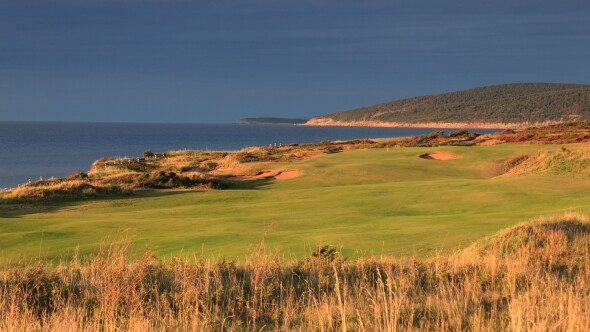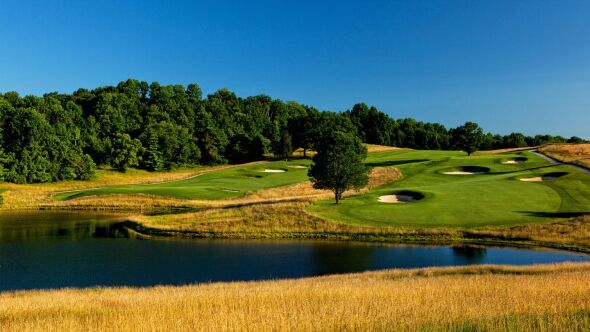What an Open, what with the emotional ups and downs of a near Tiger Woods major triumph and the sight of Francesco Molinari steadily playing his way to victory without a single bogey on the card all weekend.
At one point, a dozen players were within two shots of the lead during Sunday’s back nine.
But this wasn’t just good theatre. It was also a "teachable moment" for learning about the game and for enhancing everyday play. Here are seven takeaways from what we saw all week at Carnoustie.
1. Wind matters
The difference in yardage when the wind flips can easily be 100 yards. That’s especially the case when you figure in the ground roll downwind. Consider two examples from the weekend, when the wind flipped from 8-10 miles per hour out of the east on Saturday to 22-25 miles per hour out of the west on Sunday.
A day after Jordan Spieth drove the (downwind) 396-yard first hole to set up a 10-foot putt for eagle (which he sank), he found himself on Sunday with 156 yards left into a headwind following his opening drive. Or consider how far Tiger Woods hits a 5-iron from the fairway: on Saturday, downwind, on the par-5 sixth hole, he hit it 250 yards. On Sunday, into a headwind, he hit a 5-iron from 176 yards to the first green.
Without wind, golf is duller and more mechanical. With wind, golf is a more cerebral, creative endeavor.
2. Slow greens
All week the greens were rolling at 9.5-10 or so on the Stimpmeter. Greens at that pace show a marked differentiation in pace when playing uphill versus downhill, and that requires considerable skill to master. Greens mowed and rolled to that pace do not put the grasses under the strain of imminent failure. They also are perfectly playable in severe winds. And they are conducive to a brisk pace of play because your comeback putts are 2-4 feet, not runaway 8-10 footers. That helped the championship move along, at a rate of about 4:20 for threesomes the first two days and well under 4 hours for twosomes over the weekend.
3. Brown is golden

Those tawny, baked-out-looking fairways were perfectly healthy. They weren’t dead; they shut down into a condition of dormancy and were poised to bounce back as soon as some native moisture returned. The best part about it is that the Carnoustie’s grounds crew, led by head greenkeeper Craig Boath, could have watered the fairways at any time but saw no need to – and the R&A Championship Committee overseeing the course setup agreed. Those baked-out fairways were a crucial strategic element of play because they kept players uncertain about which bunkers would be in play from one day to the next.
4. Ground game
In links golf you continually have to read the terrain to figure out what’s going to happen when the ball hits the ground. That’s the very definition of strategic golf. Strong players like to power the ball aerially, vertically, and have it stop when it lands.
But in the firm, fast conditions of a properly prepared links course, what counts is the roll out and where the ball winds up. That’s why the players were constantly changing their ball flight and having to assess carries to landing points along with the ensuing rollouts – in many cases 75-100 yards of ground game. That kind of calculation makes for an entirely different game than the aerial attack-golf that prevails on heavily watered (American) parkland courses.
Video: Top 5 lucky shots during The 147th Open
5. Bunkers like vacuums
Because links courses sit on well-draining sand the bunkers drain naturally and don’t require elevation or an outlet pipe to get the water out. They can sit in low areas, or they can be stacked up facing the line of play and serve as catcher mitts. In either case, a ring of meticulously cultivated lush turfgrass does not protect them. The whole point of a bunker is to draw the ball from around it and to serve as a warning sign – approach to achieve the ideal line, but don’t get too close. Parkland courses with bunkers lined up down the sides of fairways and protected by rough only take in shots that are flown in. Bunkers on links courses take in golf balls that are rolled in. They are so much more effective and so much more dangerous as obstacles, depending upon ground conditions and wind.
6. Treading the fine line
Links golf is golf on the edge: Flying a fairway bunker to get the downside forward kick that could mean an extra 50 yards, though coming up a yard short in the sand will leave you with nothing but a sideways out; greenside recovery with a putter where you have to shave the edge of a bunker to get the ball close to the hole; or an approach to a back pin where the slightest overplay will lead the ball to roll up, over and dozens of yards away. Three times on Sunday, Xander Schauffele wound up with lies in greenside bunkers that required him to manufacture a stance from with one leg tucked under the other.
That’s links golf.
7. Scruffy is beautiful
Who cares about a little “fairy ring” in the greens – that nebulous discolored edge of darkened turf on putting surfaces we saw all week. It’s purely aesthetic, a harmless occurrence that doesn’t need to be cured. It’s all part of a scruffy, rough-hewn, crinkly sensibility. The oddity of links golf is that nearly all of the players this week at Carnoustie extolled it – and most Americans who go over to play it love it as well. The real test is their tolerance level once they come back to the States.
If they/we can develop an enhanced appreciation for diverse conditioning and setups, the lessons of links golf will have been well learned.











I loved this golf course
Brad, always right on the money with your observations, evaluation and recommendations. Golf would be way more fun and much less costly if this Scottish model were adopted in the states.
Excellent article which as a lover of all things Links I agree, except for Brad’s remark “a properly prepared Links
course” - surely an oxymoron ?
Excellent article. Thoughtful and informative
Golf is more a game than a sport. While Tour professionals blast away on the US tour, watching them manage their way around Carnoustie was more like a game of chess. Make a bad move and find yourself in check.
These guys are not only good, the likes of Molinari are masters of strategy.
Just began playing, marking my one year anniversary this week. Most of this is Greek, but I love the game! I should have listened to my father years ago...play golf son, it’s a great sport! I’m glad I began, even though I’m 58 yrs old. Love the outdoors, the mental concentration needed and the exercise! Thanks Dad for again guiding me in life, albeit posthumously.
Less”thank you, Gary” and “that’s right,Johnny”
And does Miller need to be there?
Good article, and great points made. Would hope that the US Open take a few hints, tho' am doubtful that it will change at all. One thing I'd take issue with, however, is the pace-of-play. You mentioned less than 4-hour rounds on Sunday. My clocks must be broken, as I thought the two-somes were very slow...(obviously, one of my peeves about pro-golf).
The USGA could take a lesson from the Open and R&A. We in America are fanatical about the stimp of a green, the faster the better we think. But go over to The Open courses and 10 on the stimp is thought to be just fine. Hooray for them. And there was no need to water nay greens for fear of burnout. Over there they laugh at what we do with golf courses. Over here when the ball hits the ground, golf stops. Over there when they ball hits the ground, golf starts.
Sick of fast greens - look what a cock-up the latest US Open was! No stimpy greater than 11 and golf would improve (also that golf we watch) the golf and speed up rounds..
On June 2nd, 2018 as part of the Southern California Golf Association (SCGA) Member Outing, I played this course. I knew the issue of the bunkers (caddies there taught me a new technique on how to get out), the pace of the greens (even going down green was slow) and the speed of the fairways (you were rewarded with extra distance if you hit the ball straight but penalized if off line right into a fairway or green side bunkers). I have a great pic of me putting on the 18th green with the yellow leader board right above the stands.